Spark R&D Arc Women's Splitboard Bindings Review
| OVERALL RATING 5/5 | RETAILS FOR $385 | SUPPORT YOUR LOCAL SNOWBOARD SHOP |
OR BUY SPARK R&D ARC BINDINGS THRU A LINK BELOW & SUPPORT GOLD SNOW.
*our COVID-19 preamble: Yes, it feels weird to write a snowboard review—or do much of anything “extra,” really—in the middle (middle is generous, I’m sure) of a global pandemic. But also, you know what… It feels really fucking nice to think about snow and snowboarding and the joy of those two things right now. While I can trend towards nihilism, oddly enough I also tend to be pretty damn good at sniffing out silver linings. Sometimes even gold ones. And getting to write about and reminisce on this past winter, via these snowboard reviews, is one of those shimmery linings. If anything, we hope they help jog the collective winter-riding consciousness, and that you then find your own lumpy amalgam of linings from there. Either way, enjoy the read and the ride (in your dreams?), and please: wash your damn hands.
Spark R&D Arc Women’s Splitboard Bindings Review
Spark R&D Arc women’s bindings. Yeah, we love ‘em.
What About Those Spark R&D Arc Women’s Splitboard Bindings?
While I have both put down and followed tracks in the backcountry for some years now, I have never done so using a splitboard, or anything even remotely close to the Spark R&D Arc women’s splitboard bindings.
Now, after getting to mount a set of Spark R&D Arc women’s splitboard bindings onto an Arbor Swoon splitboard (big breath out), I see the light that is splitboarding. I see how simple and lightweight and no-fuss it can all be. I see how women’s splitboard bindings have come a long fucking way, and how the women’s specific Spark R&D Arc is leading that way. How the Spark R&D Arc is perhaps even peerless when it comes to top splitboard bindings on the market for women. I see all these things that, eight or so years ago, either didn’t exist or were talked about in a very different light.
Back then, when I was crowdsourcing insight and advice about what to do for a backcountry setup, the chatter about splitboard bindings was much less positive and encouraging and technically advanced than it is now. At that point, there was still a lot of negativity hovering around splitboard bindings, as it wasn’t that much further back in time when split bindings were deemed inefficient, unresponsive bricks that were hard to use and heavy on the uphill. Basically the exact opposite of the Spark R&D Arc women’s splitboard bindings I recently tested and am currently head over fucking heels for.
A brief story, if you will…
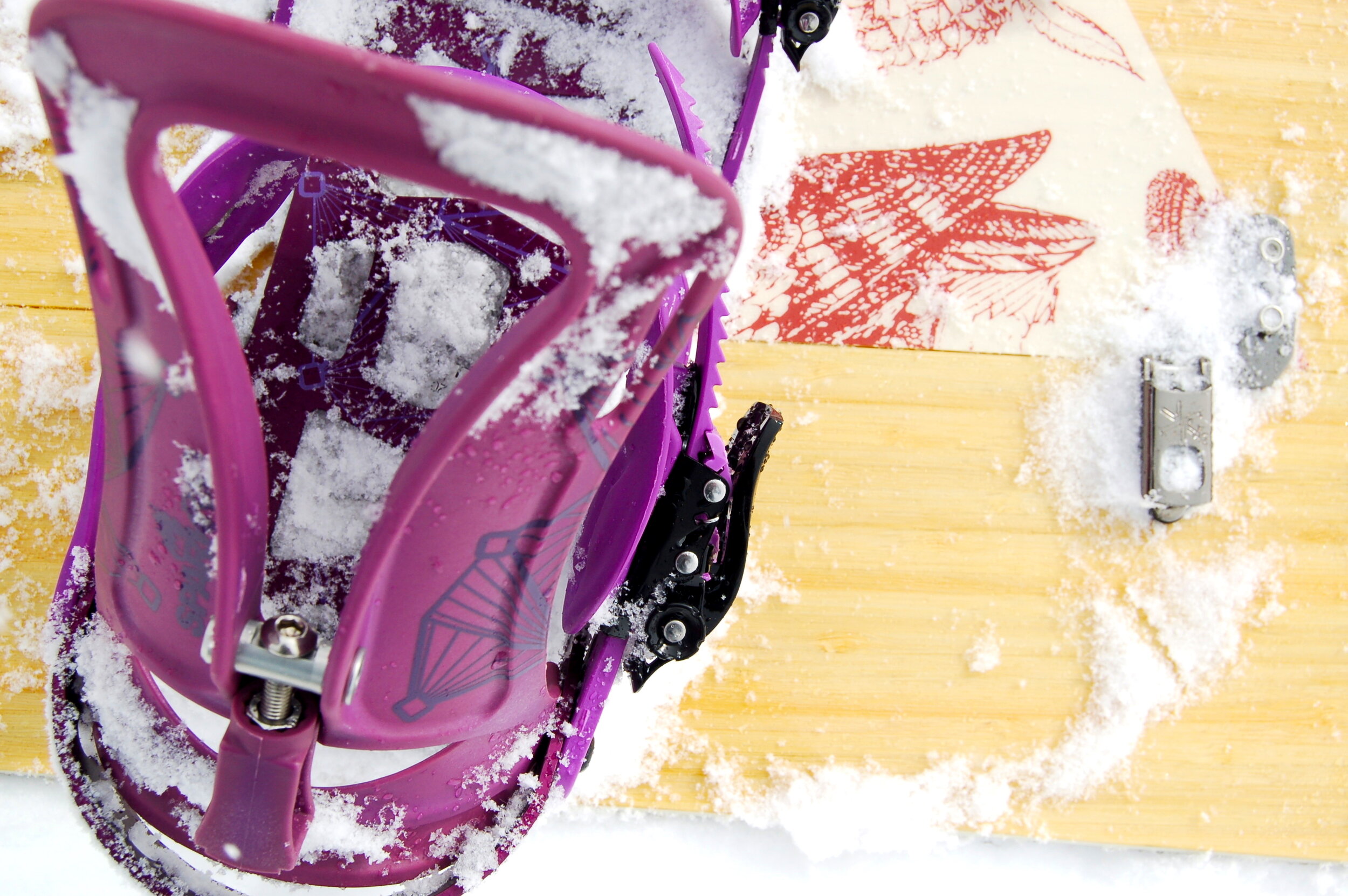
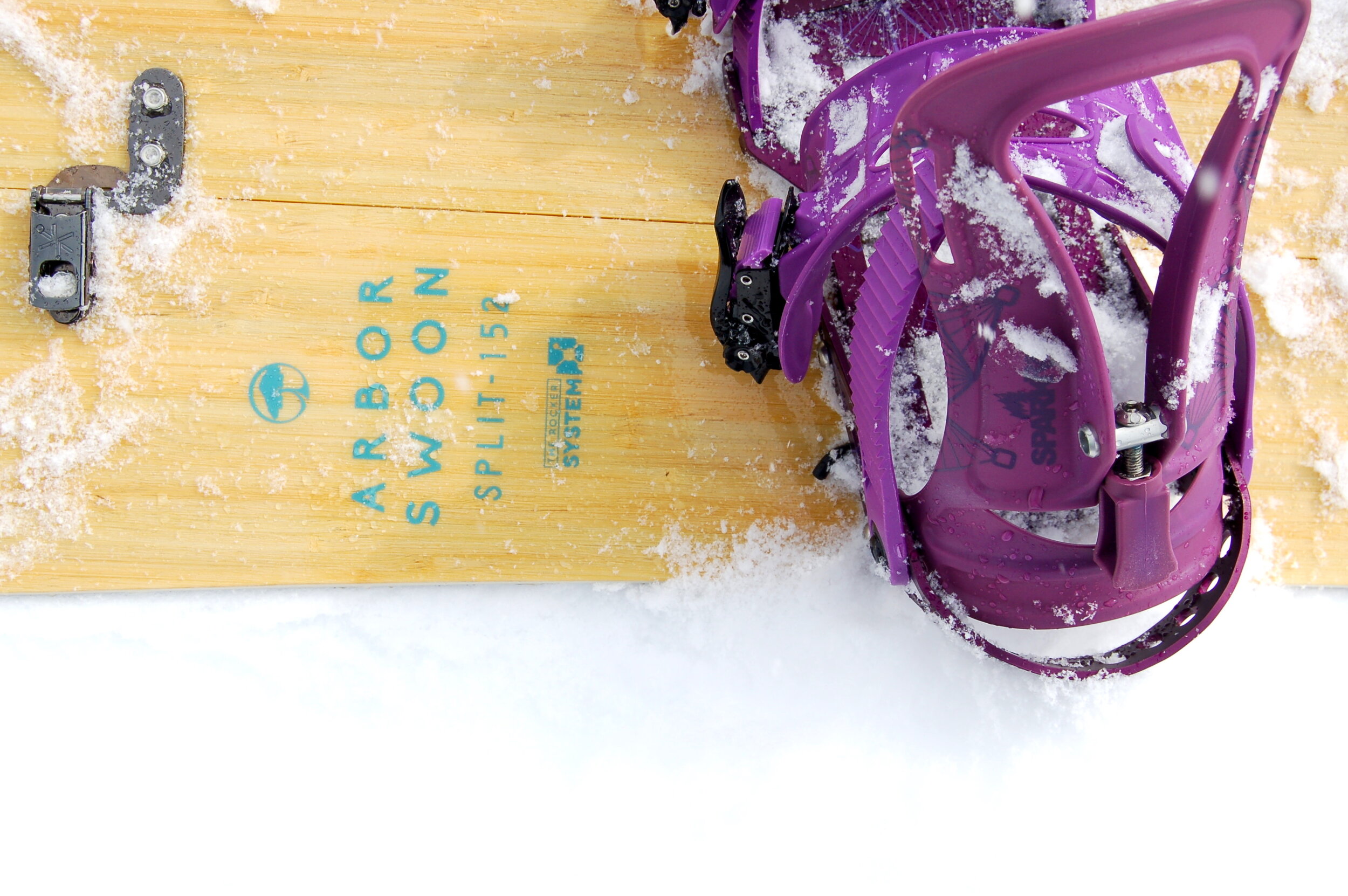
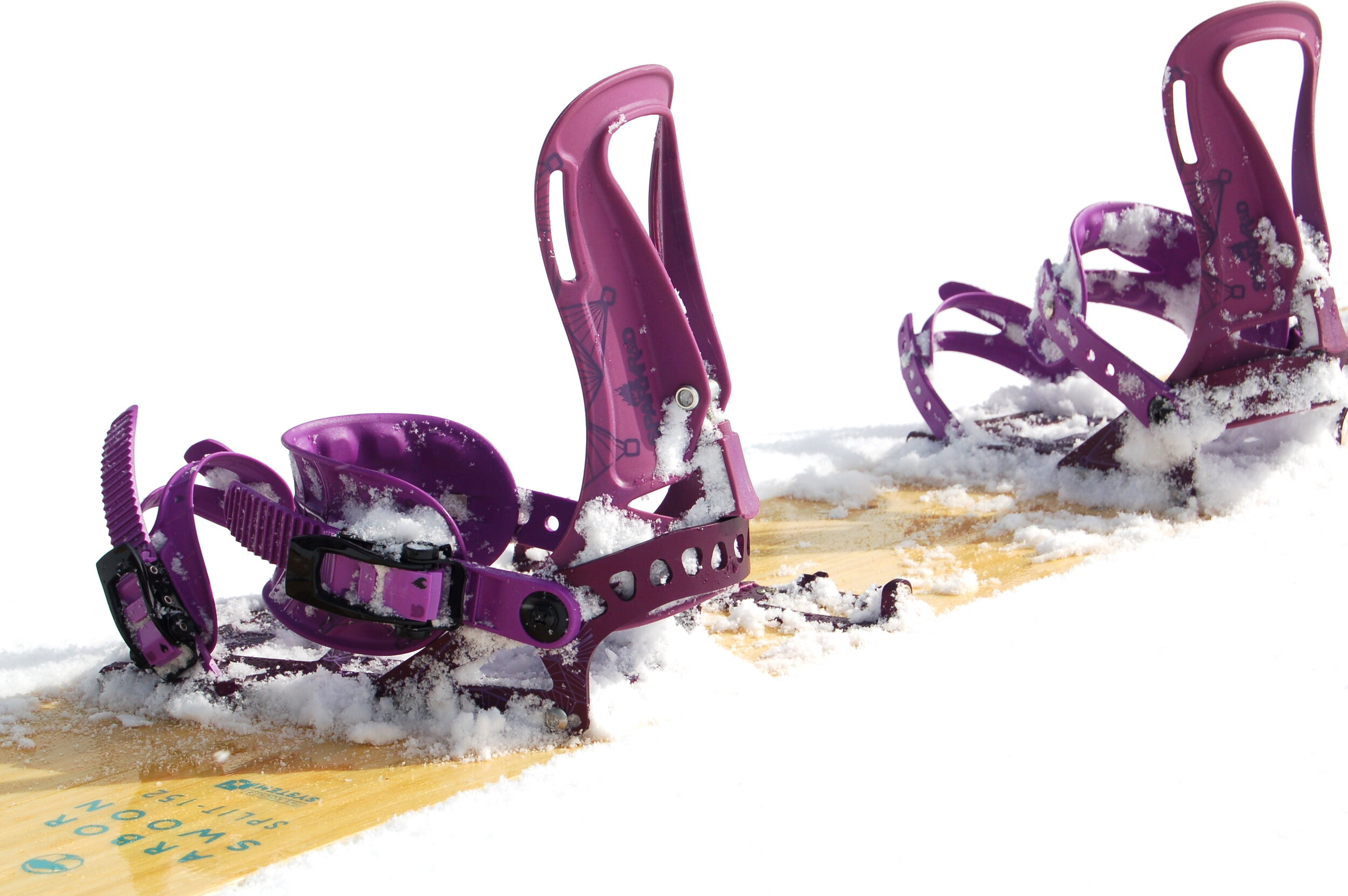
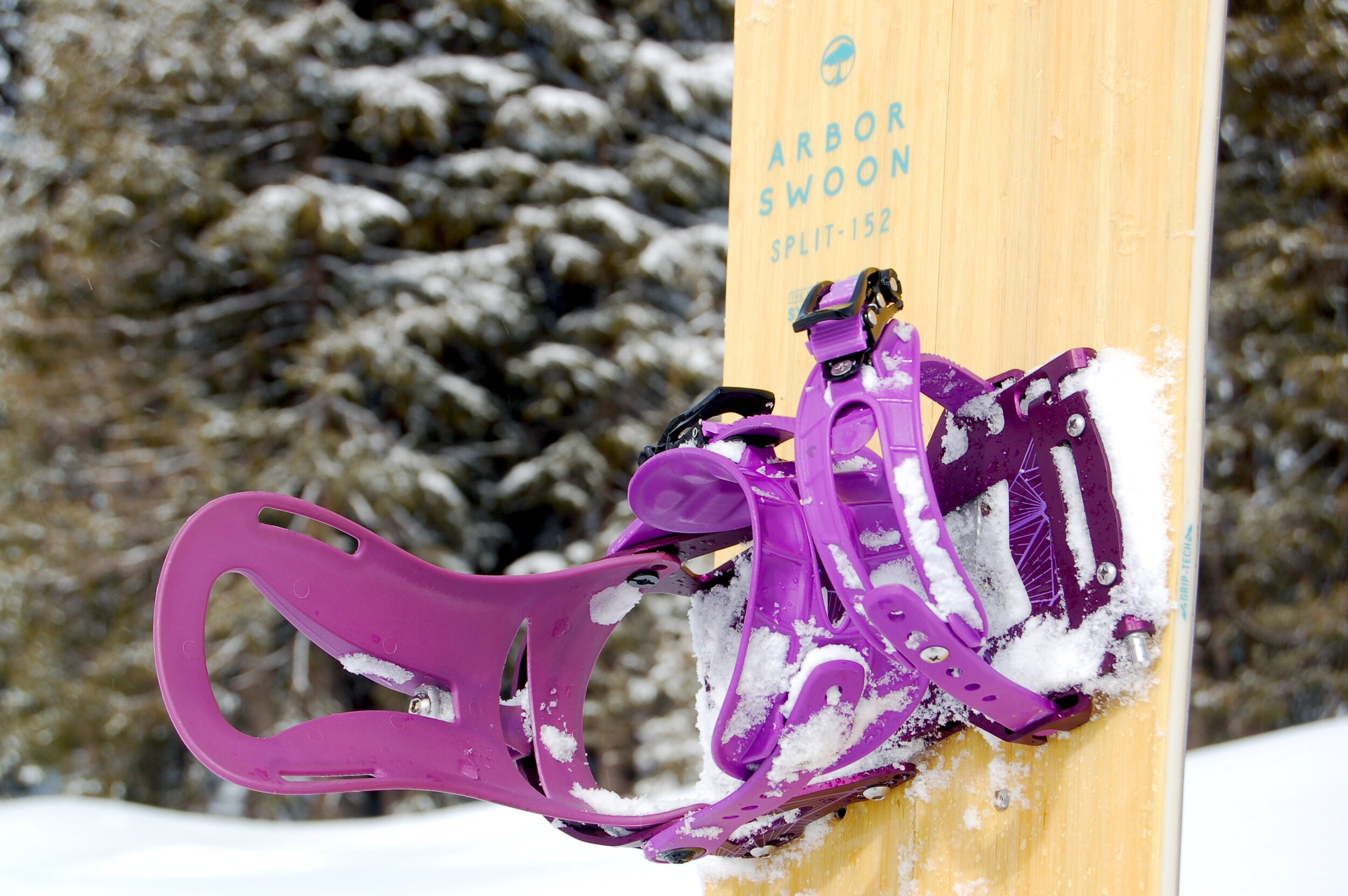
Circa 2012/13, I became the owner of a deeply discounted AT ski set up, complete with bindings and boots that were much fancier than my skiing abilities warranted. I started newborn deering it a few times a week in order to up my ski game and “make it easier to tour out of bounds with skier pals.” At the time, I was still under the impression that splitboard setups, including bindings, were heavier and more expensive (a dear friend with Dynafit pro forms was one of the reasons my lightweight AT setup cost so little). I was also told that splitboard setups were significantly slower when it came to transitions (a lot of AT skiers seem to pride themselves on “fast transitions”), and that it was a nightmare to clear snow and ice buildup from the baseplate area when repositioning splitboard bindings for the downhill. And so in adding all the factors up, I decided to just go for it with the fancy AT gear so that I could feel light and nimble on the way up, experience seamless (yeah right) transitions at the top and bottom, and fully embrace scared-shitless descents in between (which, for a snowboarder on skis, is every descent).
““...where have you been all my life, Spark R&D?!””
Fast forward to 2020 and me still feeling gripped on skis in the backcountry—only now I have this thing called Gold Snow where I get to test out rad, high-quality snowboard gear, including a set of Spark R&D Arc women’s splitboard bindings and an Arbor Swoon splitboard—and all I have to say is this: where have you been all my life, Spark R&D?!
““...while I was stuck in the stone age in terms of my perception of splitboard bindings... the women’s specific Spark R&D Arc bindings were busy becoming the shit.””
Along with this: if someone out there is still telling you that it will be easier to keep up with the skiers if you opt for an AT setup over a split setup, they’re fucking wrong. Just nod and say uhuuh, alright. But don’t listen to them. Instead, listen to me. Someone who initially listened to the people I am now telling you to ignore. Because while I was stuck in the stone age in terms of my perception of splitboard bindings, for far longer than I should have been, splitboard bindings like the women’s specific Spark R&D Arc were busy becoming the shit. How so? Well. It’s time to look at some photos and keep reading.
Spark R&D Arc Women’s Splitboard Bindings: Functionality, Fit & On-Snow Feel
Functionality: As a newbie to splitboarding (and setting up splitboards—you know the backstory), I found it extremely easy to not only set up the Spark R&D pucks and dial in the stance, but also slide the Spark R&D Arc bindings into place and ride away. The puck setup process was fairly intuitive, and the act of sliding the Arc bindings onto the pucks (whether at home, for the first time, or out on snow) was SO SMOOTH. I write this in all caps because, well, the simplicity and ease of it all blew me away.
Women’s Arc splitboard bindings from Spark R&D and a Pallas splitboard? Aight, we down for that.
As for the overall adjustability of the Spark R&D Arc women’s splitboard bindings? Also a piece of cake.
The whammy bar climbing wire easily flips from a “stowed” position to 12° and then 18° (great for when things pitch up and then mellow—that is, for when the terrain undulates).
You don’t have to fuck with any pins or cables or bullshit when sliding (literally) into or out of tour mode. The Spark R&D Arc bindings slip into side-locking Tesla touring brackets and stay put—seriously, the user experience of this part is lovely. Like salted butter.
Once the Arc splitboard bindings are on, in ride mode (also a lovely user experience to slide them onto the pucks), you can still access the puck screws. Why is this cool? You don’t have to take the bindings back off in order to fine tune your stance.
The “Rip ’n’ Flip” highbacks (whose shape, according to Spark R&D, is “built from 3D scans of popular splitboard boot models”) are something you can adjust without a tool, and that easily transition between the forward lean you set them at and a -13° touring position. Boom.
The straps employ Burton ratchet-system buckles (my favorite), and are pretty much indestructible.
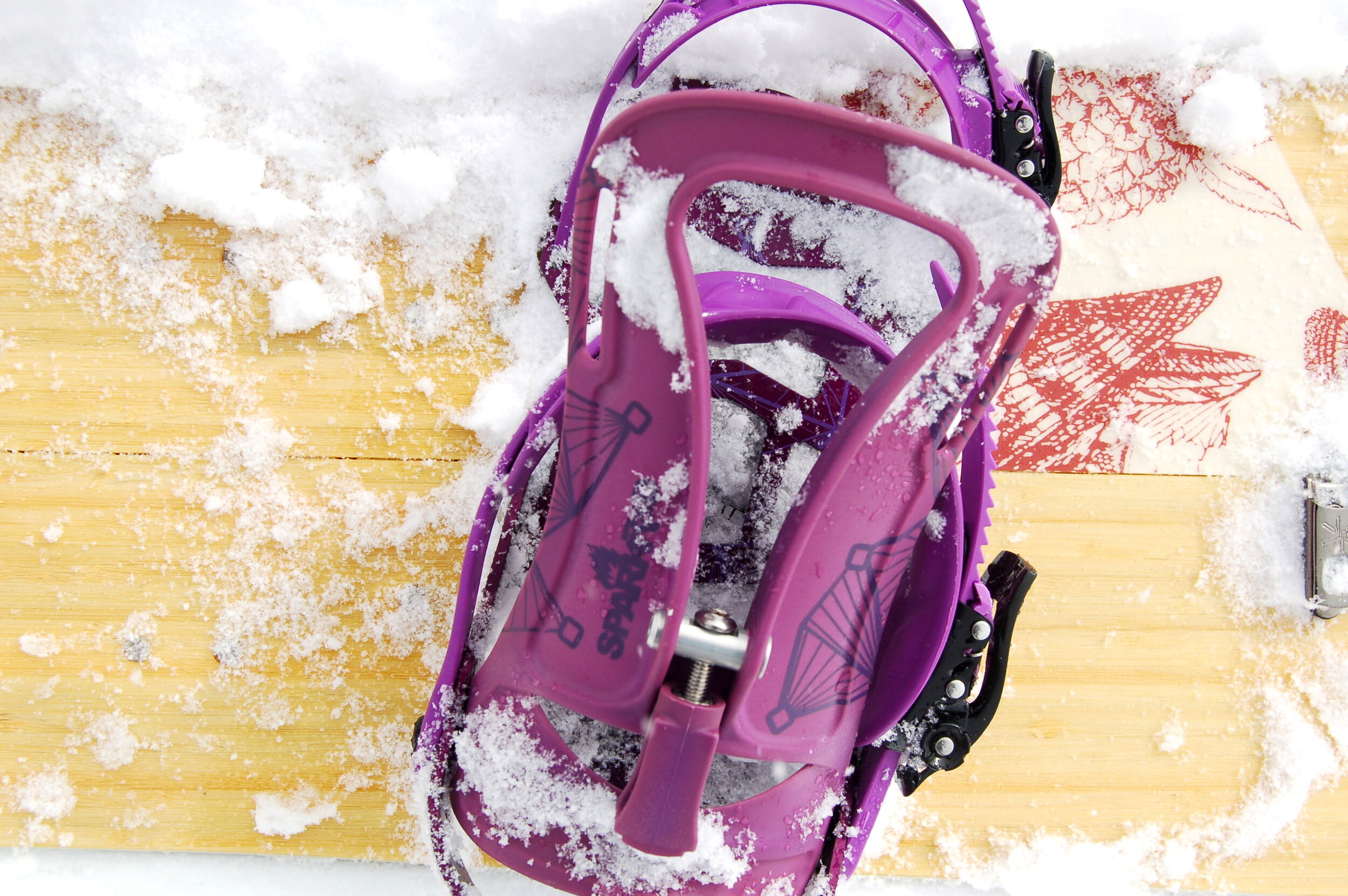
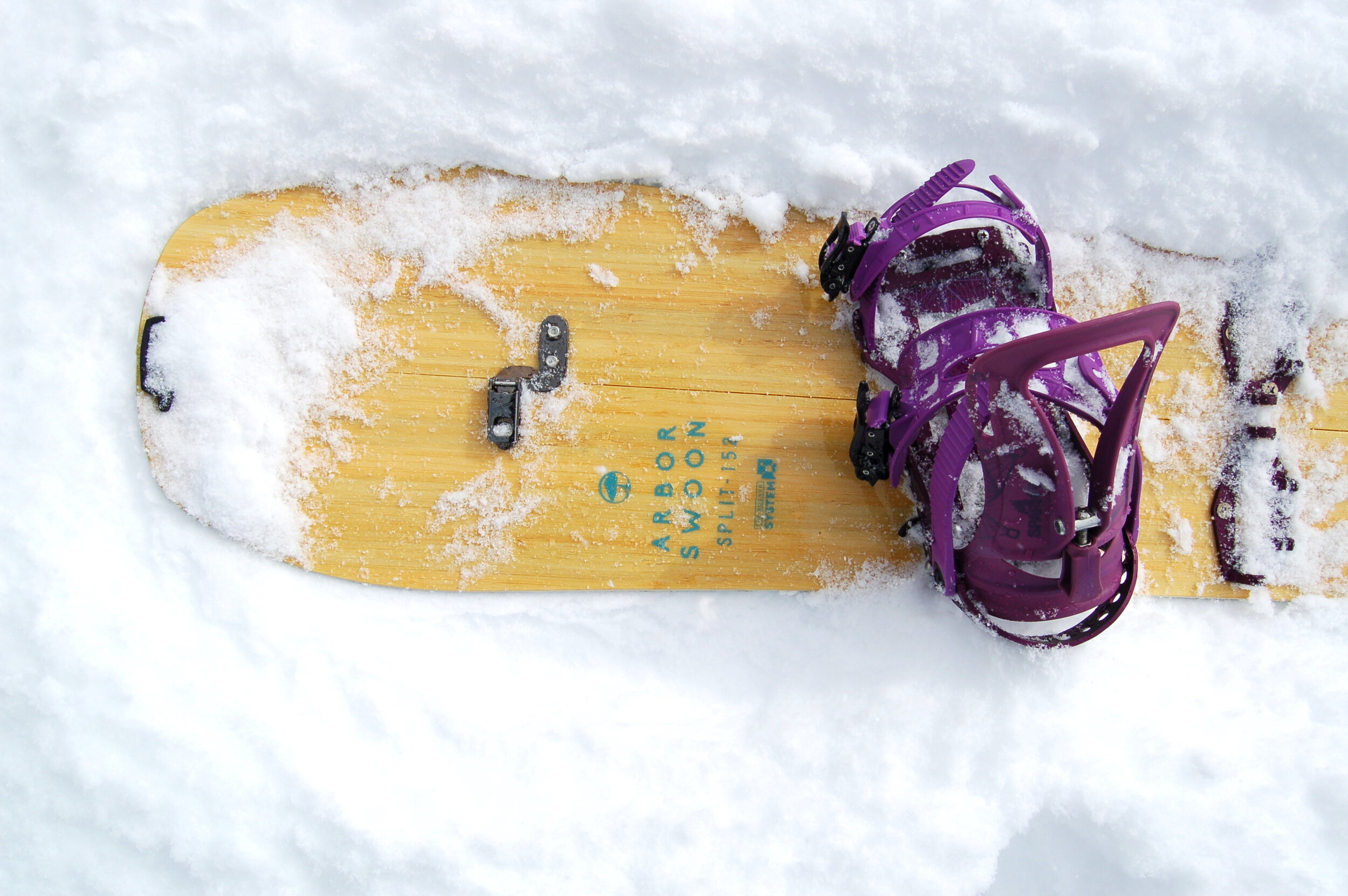
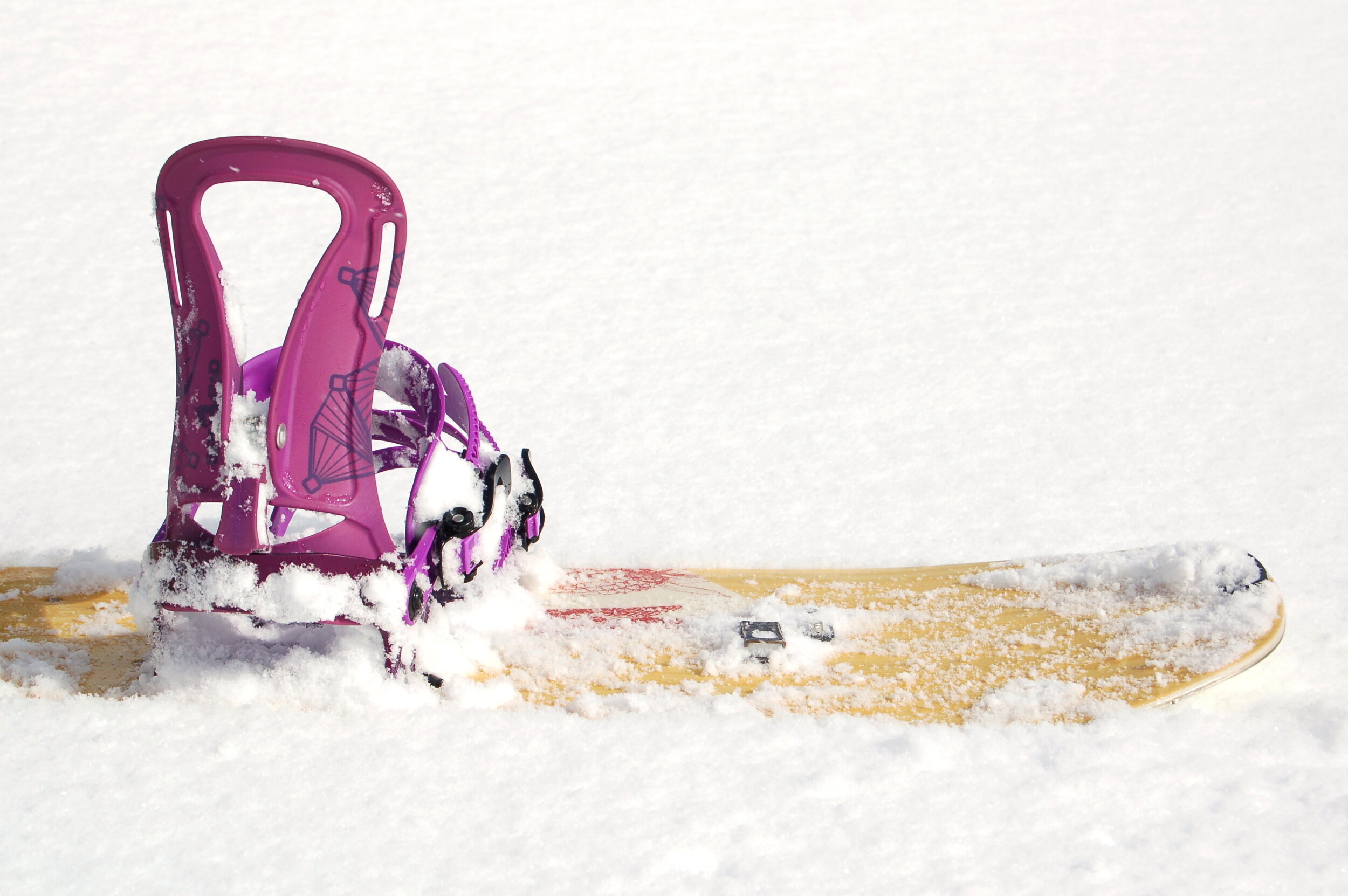

Fit: For my size 8 boots (medium volume Deeluxe Team ID Lara boots), the XS/S Spark R&D Arc women’s bindings are a perfect fit—like two little plum-stained hands holding my feet in place. And seeing as how I love the heel straps that Burton makes (read: forgiving yet forceful), I find the similarly structured Pillow Line straps on the Spark R&D Arcs to be exactly what I want in a pair of splitboard bindings.
On-Snow Feel: Booyaaa! The on-snow experience of the Spark R&D Arc women’s bindings is not like a dream, it is a dream. These plum-colored beauties offer the perfect amount of stiffness (meaning: not stiff at all, but rather pliable in a way that doesn’t give way when you give ‘er, got it?). Spark R&D claims a “surfy” feel for their Arc women’s bindings, and I couldn't agree more. I think in some terrain and conditions I’d want a stiffer pair of boots (I don’t have backcountry-specific snowboard boots), and that the combination of a stiffer boot + surfy binding would amount to just the right bowl of porridge.
Basically, if I were to distill the on-snow feel of the Spark R&D Arc women’s bindings, especially in pow, it would look and sound like pinching all your fingers up close to your lips at once, and then releasing them with a kiss.
Why the Spark R&D Arc Women’s Splitboard Bindings Might Not Be For You
Um. If you’re not looking for that surfy feel I was just talking about, then maybe these women’s specific Spark R&D splitboard bindings aren’t for you?
I could see wanting stiffer bindings for more extreme terrain. But, the majority of us aren’t filming with TGR (if you are, brava), so… yeah. Oh, and skiers. The Spark R&D Arc bindings also might not be for you if you're a skier. Which is to say: I kinda think these here Arc bindings are THE go-to for women’s splitboarding.
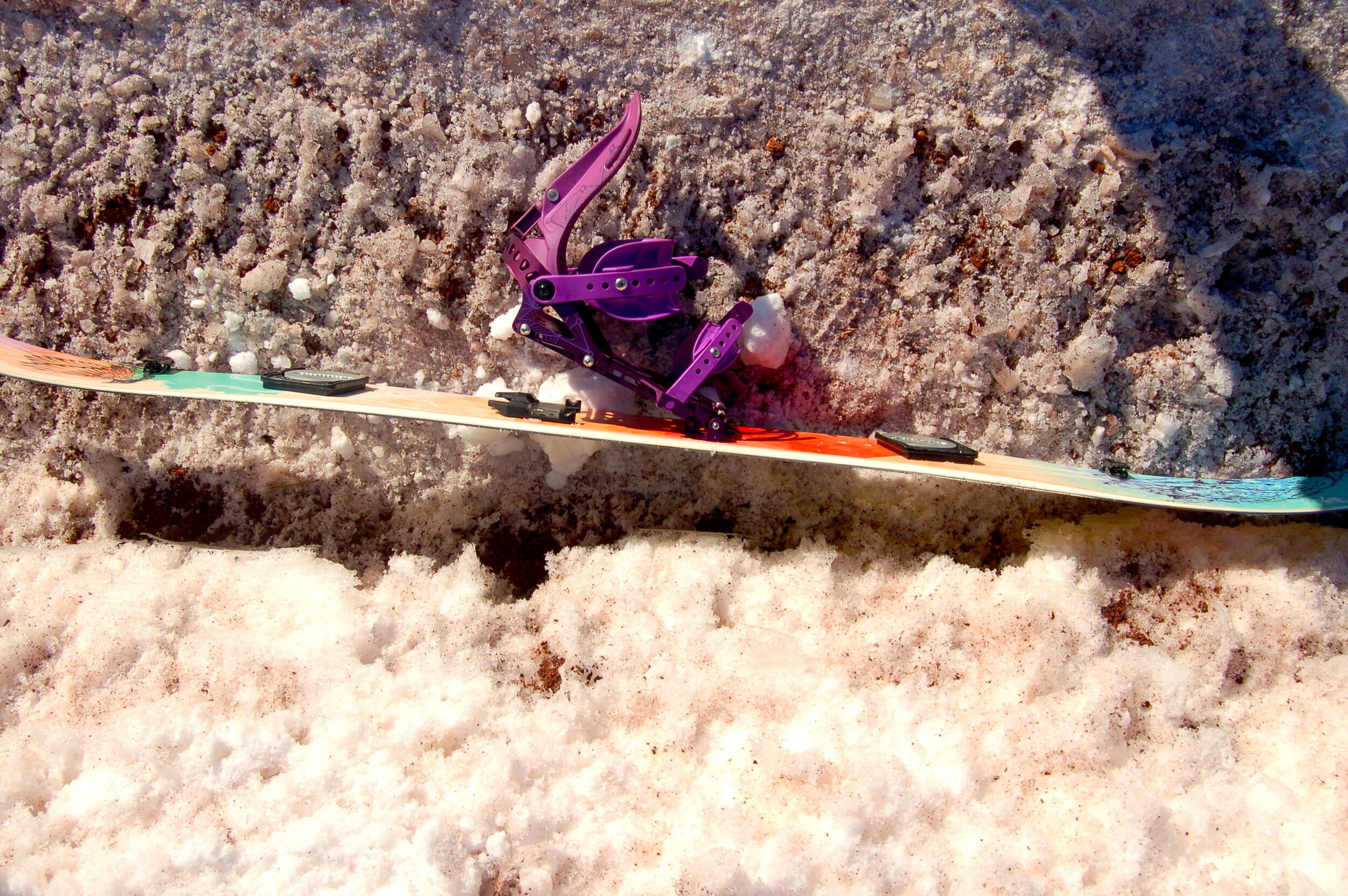
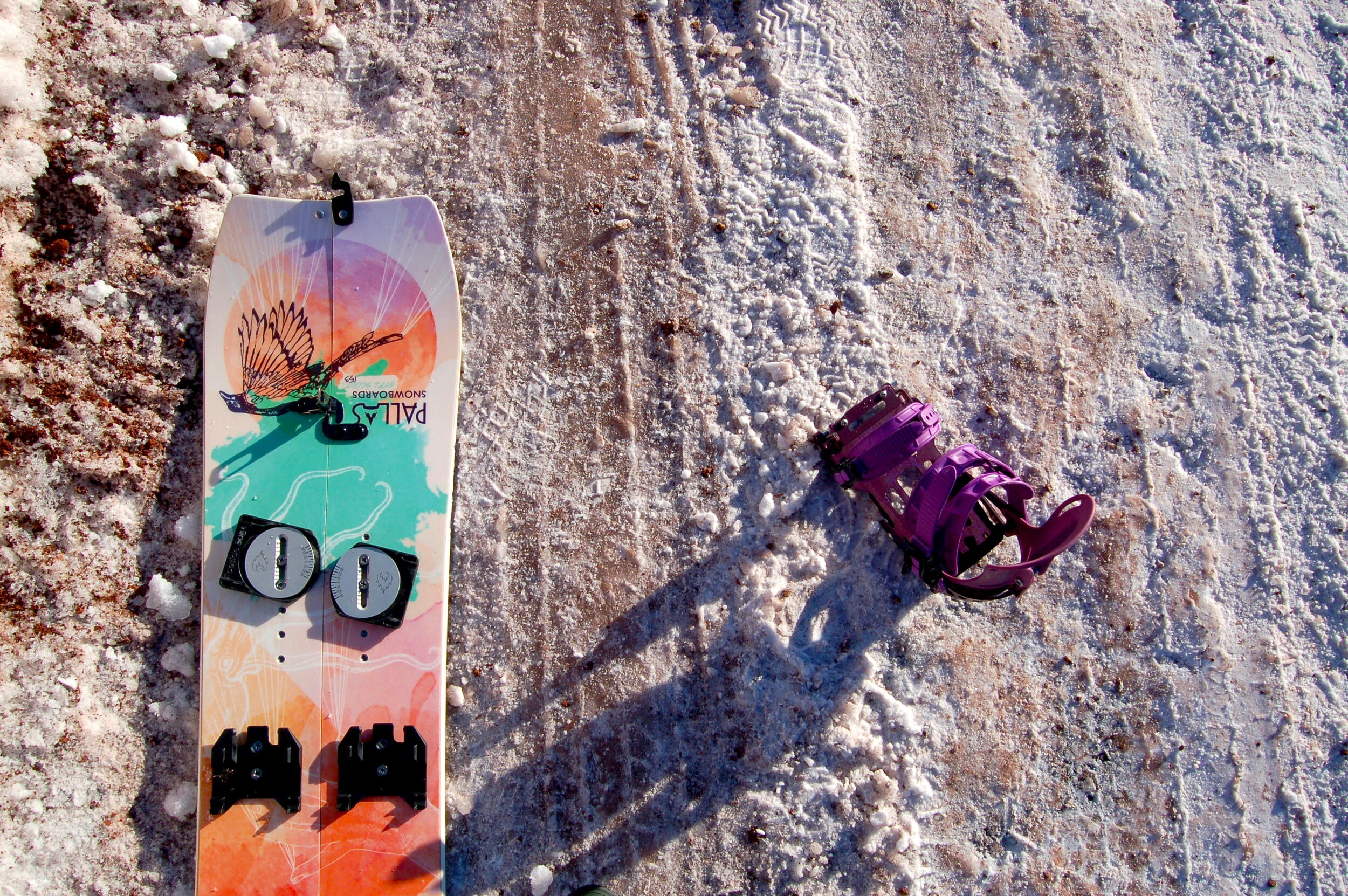
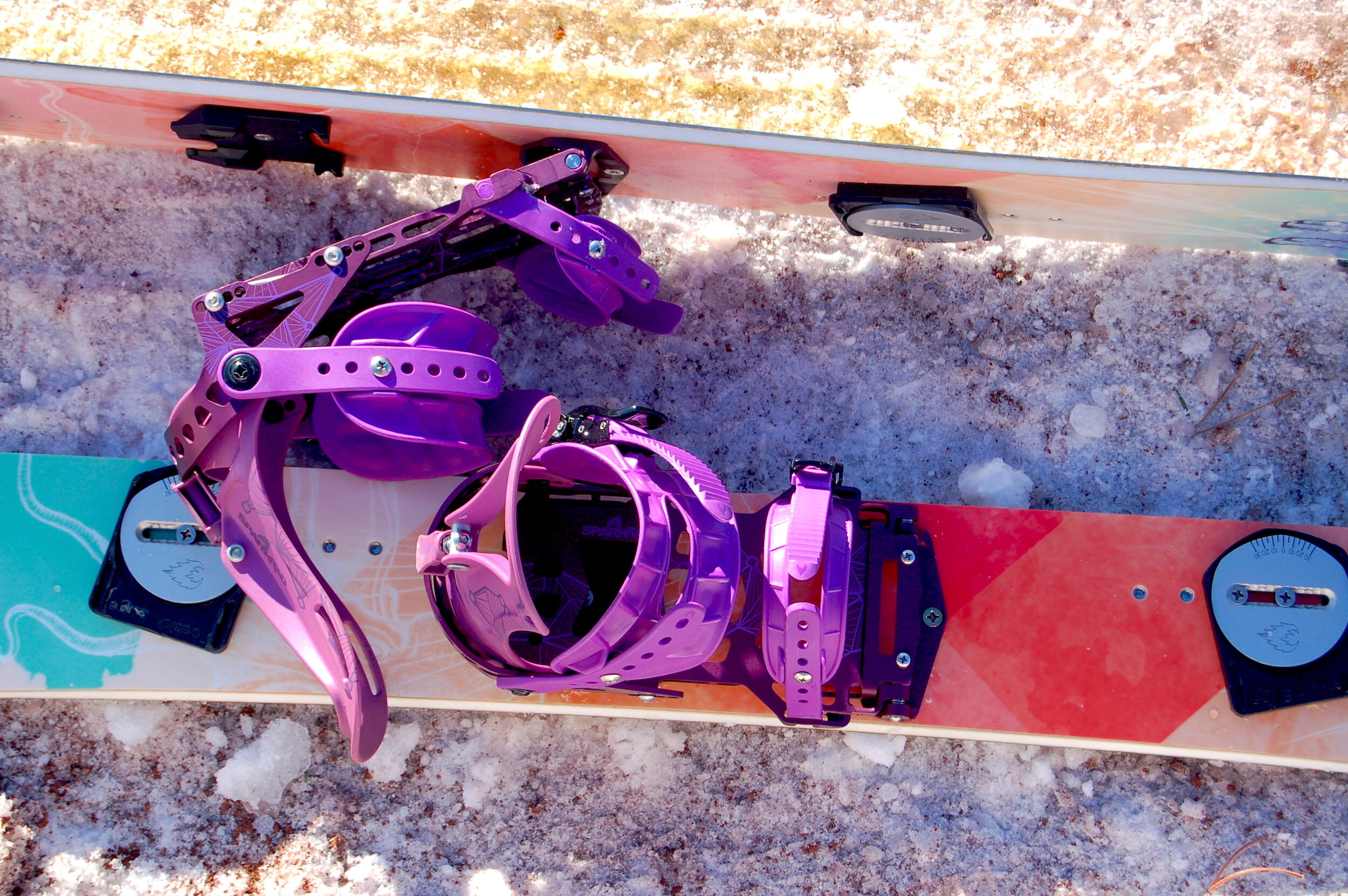
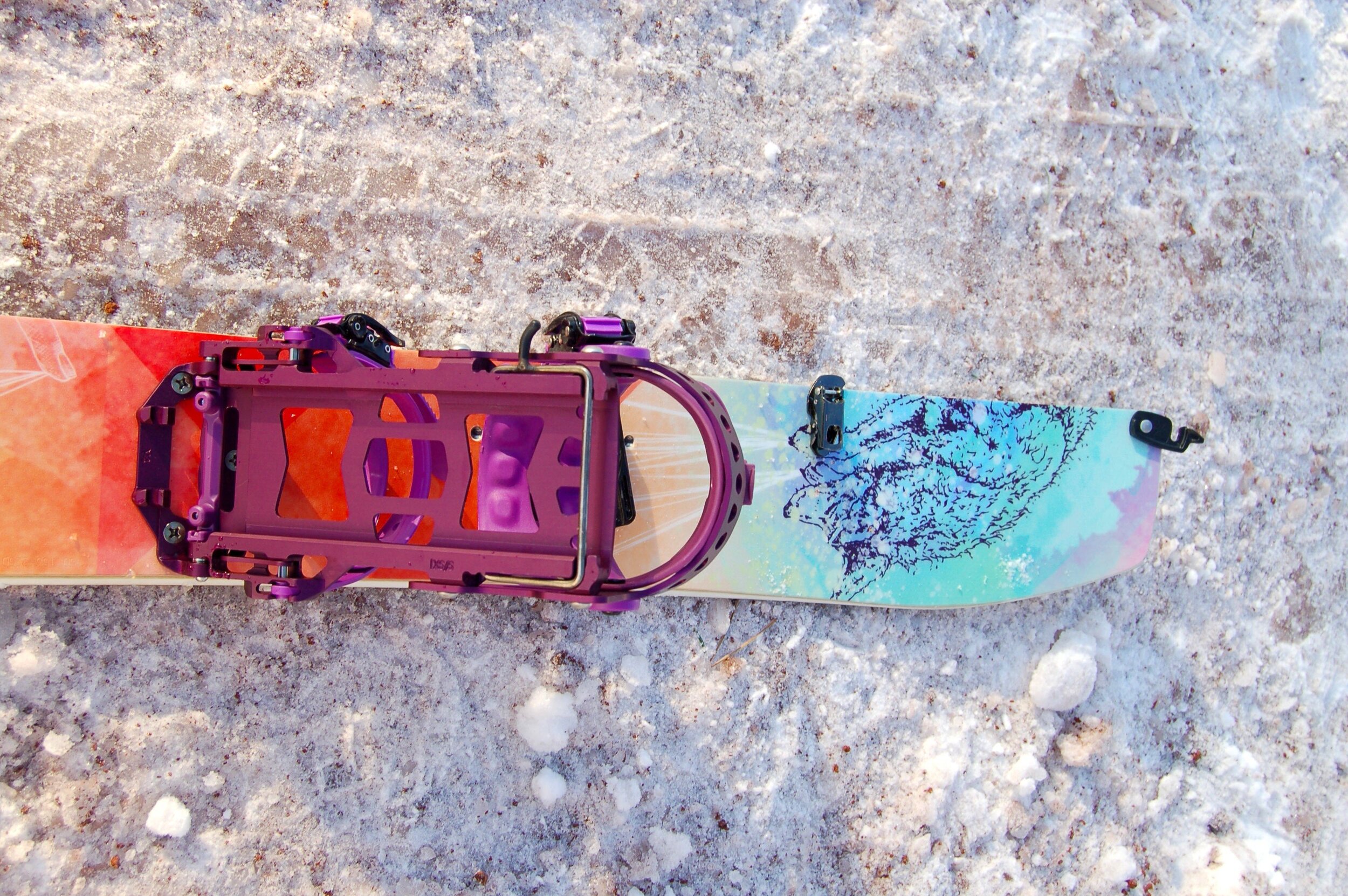
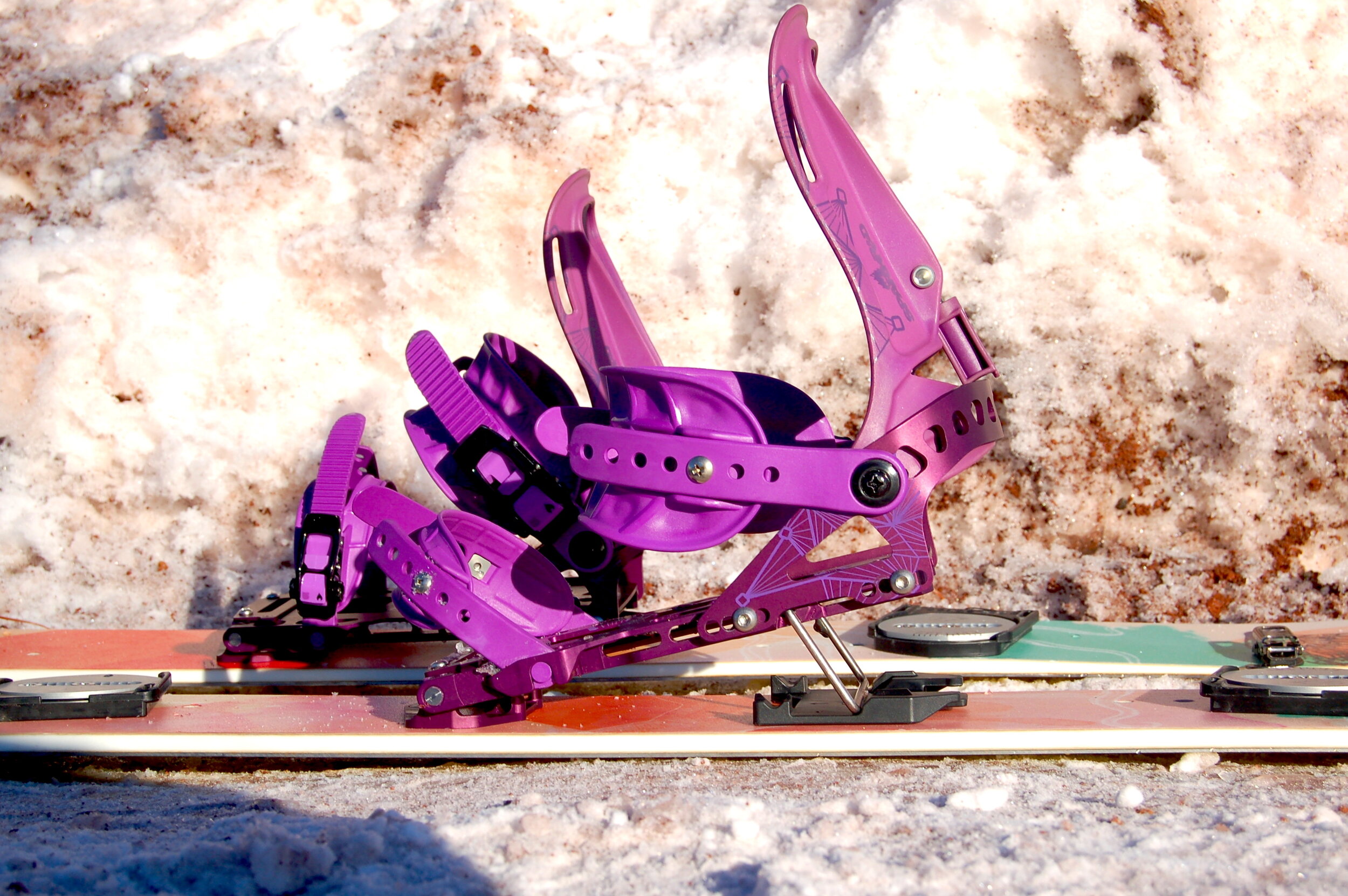
Why Buy the Spark R&D Arc Women’s Splitboard Bindings, Plus Some Parting Notes
While I haven’t said much yet about the color options for the Spark R&D Arc women’s splitboard bindings, that’s not because I don’t like them. There’s just so much else to gush on about in regards to the Arc bindings that I nearly forgot. But alas, whether you opt for the plum or the black version, they’re both sweet. I know not every mamacita is into the purples and pinks so often used in women’s specific designs, but the plum used on the Spark R&D Arc bindings feels good to me. It’s feels less like “gee whiz, let’s all smile cuz we got a women’s specific version,” and more like “here I fucking am, bitches.” So yeah, I can roll with that.
Aight. To emphasize one last time: if you splitboard or if you’re thinking of getting into it, the Spark R&D Arc women’s splitboard bindings are either going to improve your current situation (like, a lot) or give you the kind of positive first experience you want. The kind that won’t make you want to say fuck it, I’m getting an AT setup, and then newborn deer it from there.
Tunes to Ride by With the Spark R&D Arc Women’s Splitboard Bindings
Phil Collins meets Michael Jackson meets Pink Floyd meets… god this song is so good and so sexy. That’s why I’m choosing it for y’all to listen to while thinking about riding fields and fields of so much snow. Which we will do for real, eventually. If we all can just manage to stay the fuck home for now.
Enjoy your reminisce through Jai Paul’s He. I’ll do the same.